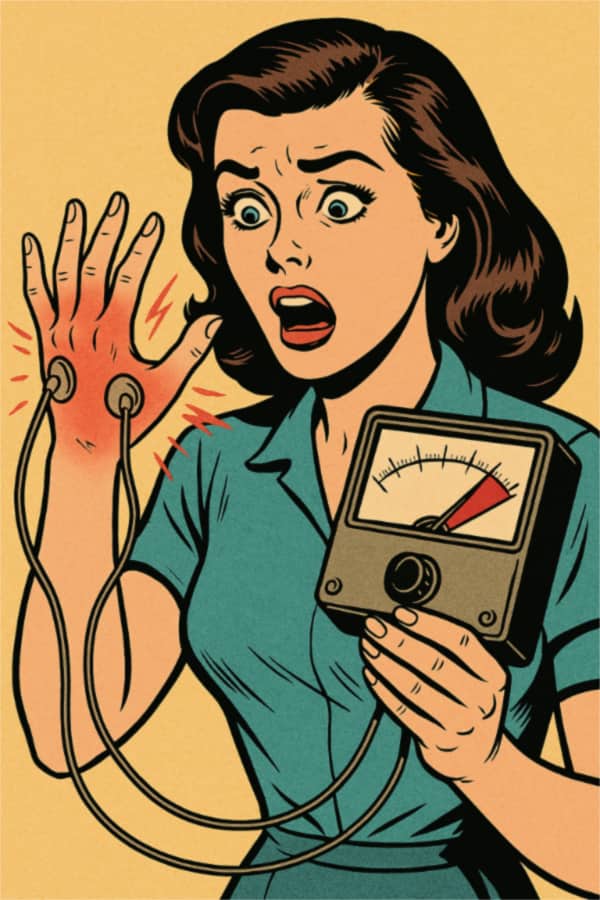There will never be a pain-o-meter — and maybe that’s a good thing
The Washington Post has published an enthusiastic, muddled, naïve mess of an article (paywalled, but just disable Javascript) about the Holy Grail of pain medicine, the objective measurement of pain, “the fifth vital sign.” Cue choir music!
But pain-measuring products will never ship … or, if they do ship, they’ll never work right, and they’ll be abused.
The article explores pain-measurement in general — without a flicker of healthy skepticism — with four examples of products in the works, such as:
“Kevin Jackson, Finkel’s partner in the company AlgometRx, which will produce the Nociometer, said they hope the device will receive approvals and be ready for clinical use within about five years.”
Allow me to bring the skepticism. 😏
Objective pain-measurement is a medical fantasy that has been “five years” away for decades now. It’s either impossible in principle, and/or just hopelessly beyond our current reach.

There are indeed biomarkers and subtle signs that correlate with pain, but none of them can ever tell the whole story. No technology can possibly measure the subjective “intensity” of the experience of feeling sensations produced in many different ways by an insanely complex system. It’s just as fanciful as the “lab in your pocket” that Elizabeth Holmes tried so hard to get the world to believe in.
Even if such a thing could somehow exist, it would never work right. It would be about as reliable as Siri. Imagine how grand it would feel to have such a gadget underestimate your pain — which it inevitably would with some patients.
We should be careful what we wish for
The ambition here is not as wholesome as it seems, because it is based on mistrust.
Far too many clinicians already fail to take pain seriously, or worse: they don’t believe patients, especially certain kinds of patients. They suspect drug-seeking, or anxiety-powered melodrama, and they suspect it more of women and weirdos. They would use a pain-o-meter like a lie detector — and just as unreliably (“lie detection” is also pseudoscience). Rather than using it to idealistically validate and clarify the experience of pain patients, they would abuse and exploit it as a generator of allegedly “objective” reasons to be dismissive, a fancy new way to “confirm” that the pain is “all in your head,” if not actually fraudulent.
If there is trust and empathy in the clinical relationship, a pain-o-meter isn’t needed.
Without trust and empathy, a pain-o-meter will make things worse.